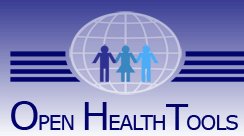Eclipse co-founder Skip McGaughey on Open Health mission


McGaughey, who has been based in Asheville, NC since launching Eclipse, is the first head of the Open Health Tools community, which announced its interoperability framework yesterday.
I was fortunate to catch him for a quick interview this morning.
His main message was that OHT has just started, that it's based on sound principles, and that its work will be global in scope, encompassing cutting-edge national efforts and a variety of licenses.
"Every organization has one vote, so it's a meritocracy. It's a community focused on collaboration where competitors can now collaborate on infrastructure. We enable vendors to use the infrastructure to make profit and create an ecosystem, and we don't compete with members or vendors."
OHT also uses the same development paradigm as Eclipse, and will build on that code base.
"We have processes in place to create high quality code in the open. It will ride on top of Eclipse. So now we have all the Eclipse developers available to us – they can supply the same models and visibility.
"We have really high skills in certain areas and that's true through the entire group. We're pulling together people who have the skills and want to give back.
"The system is being held together by the quality of the individual physicians and care providers. There are good people everywhere. We just can't collaborate."
McGaughey is not troubled by the fact that most of the major vendors in the health IT space, like Siemens, McKesson, Cerner and Microsoft, are not yet part of OHT. (IBM is.)
"When we started Eclipse we started with 9 vendors. Almost every vendor in OHT now has unique skills and talents. As we create the infrastructure we'll add traditional providers.
McGaughey said that while the OHT is enabling the Eclipse license it is open to other license schemes as well. "This is particularly important in the public sector and with viral licenses" like the GPL.
"The public sector doesn't have the same due diligence in regards to intellectual property – it's hard for an organization to sue the government so they don't spend the resources on assuring the integrity of the intellectual property.
I asked McGaughey about the HIMSS interoperability council, an industry group trying to link the main vendors together, and whether OHT will have connections with it. He said it will, but the two groups have different missions.
"We write code. That's our output. We partner with whoever it is who's developing the standards, and we will write the code to implement that standard in partnership with the big consumers, like the UK National Health Service and Health Services Australia.
"As new standards come out we'll write the code in order to make that work. The reality is that not all the standards work together, so we're going to be creating a simulation environment so that vendors can self-certify code from an interoperability perspective. So you can run code against the simulator. That will tell you how it interoperates.
"The other thing the press release doesn't address to the extent it could is that different countries are taking on different responsiblities," he added.
The main goal, McGaughey concluded, is to put patients and doctors back in control of information.
"If you look back to the mainframe years that was in control, in the PC era the developers are providing the options and control mechanisms. As we roll out health care and roll out SLA and environments like this it's going to be clinicians and patients who will be in control.
"You as a patient will have the ability to receive information from wherever it might be. It will follow you as you change jobs or move. It will be available to you on an interoperable system."